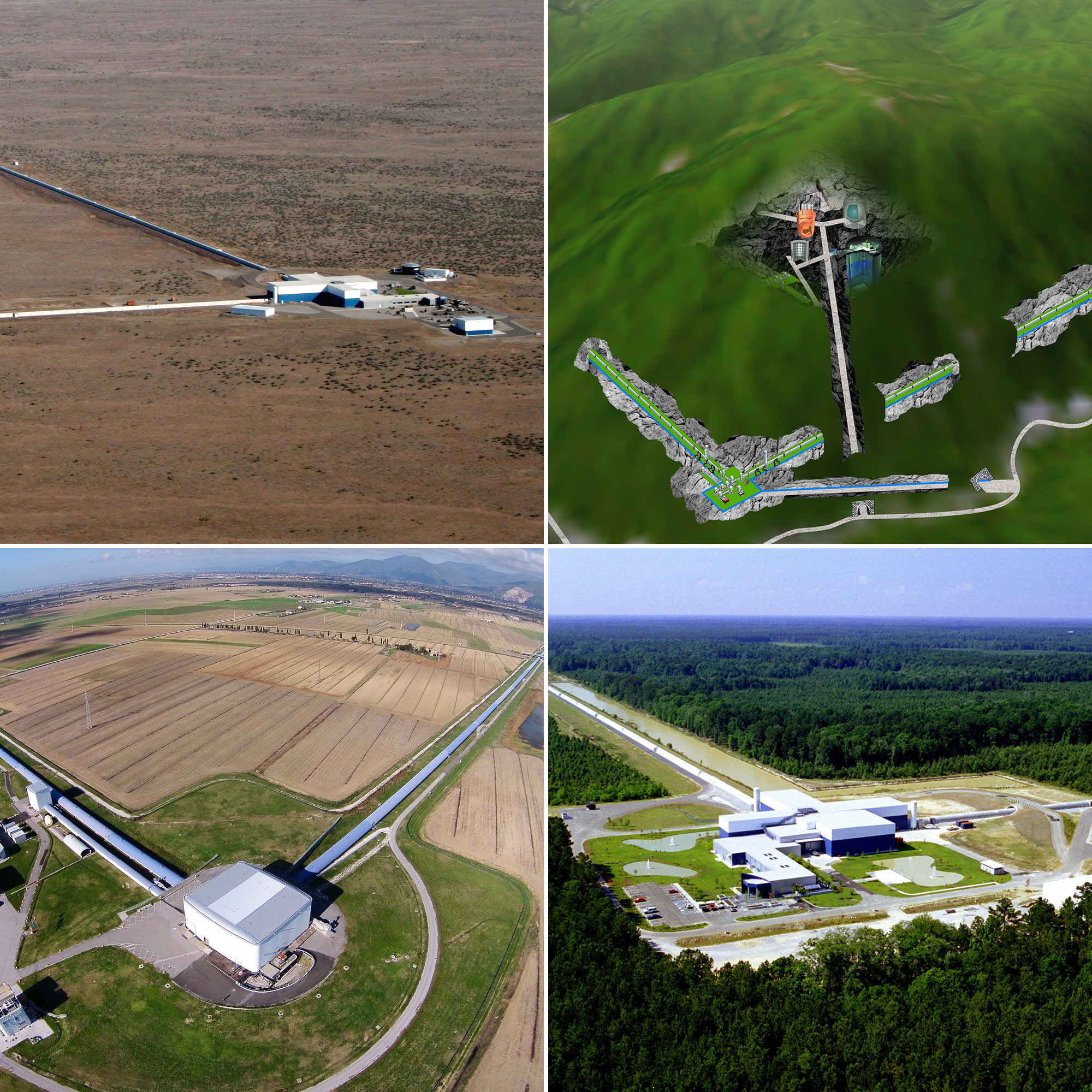The LIGO, Virgo and KAGRA gravitational wave detectors are today completing their longest observation period ever. The result: more than 250 new space-time vibrations in two and a half years.
The detectors in the US, near Pisa and in Japan, together known as the LIGO-Virgo-KAGRA (LVK) collaboration, report a successful fourth measurement run since the start in 2015. In total, two-thirds of the approximately 350 gravitational waves ever observed have been measured since May 2023.

The measuring instruments will now undergo a period of further adjustments and improvements to further enhance the sensitivity of the measurements. Nikhef is closely involved in this at Virgo. It is not yet known when a new measurement round will begin.
Nikhef is one of the main partners in the Virgo project in Italy. The Netherlands developed and improved the interferometer south of Pisa. In two laser tunnels two kilometres long, laser light bounces back and forth between freely suspended mirrors and reveals extremely small changes in distance when a wave passes the Earth.
These waves are created when distant black holes or neutron stars collide and cause ripples in space itself. The direction of the source and properties of the colliding objects can be deduced from the minute movements, especially when the scattered detectors work together accurately.
The high scientific yield in the measurement campaign since 2023 is due to a series of technical improvements to the detectors and their sensitivity, says Virgo spokesperson Gianluca Gemme.
The Italian detector initially had a difficult start in measurement round ‘O4’, but ultimately contributed greatly to a series of interesting observations, he adds. KAGRA’s contribution has been limited so far.
The LVK collaboration has been in the news several times over the past two and a half years. Recently, an observation in 2025 confirmed Stephen Hawking’s prediction about black holes, which, when they merge, should form a new black hole with a larger surface area than that of the black holes combined.
In 2024, two collisions of pairs of black holes with unusual masses and spin directions were observed in quick succession. This suggests that they must have been created in previous collisions, providing the first glimpse into the rich formation history of some black holes.
In 2023, a signal was detected from a collision that formed the heaviest black hole ever, 225 solar masses. This is heavier than most formation models predict.
The data from the observatories is widely shared and analysed, including in the Netherlands. Even during the coming period without observation, researchers will continue to comb through the catalogue of measured events in search of unusual effects. With the extensive collection of observations, statistical research will gradually become possible, whereas previously only individual collisions were available.